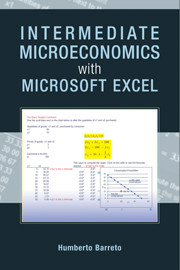PART II - THE THEORY OF THE FIRM
Published online by Cambridge University Press: 05 June 2012
Summary
For Friedman, lack of realism of assumptions is not a virtue. It is a necessary evil: to base theories on absolutely realistic assumptions is like drawing a map on a one-to-one scale.
Mark BlaugConsumer Theory focuses on the buyer. It models a consumer's optimization problem and emphasizes deriving a Demand Curve as an important result.
The Theory of the Firm is about the seller. Firm decisions about inputs and outputs are modeled as optimization problems. A key result will be deriving a Supply Curve.
The Theory of the Firm is made up of three interrelated optimization problems.
1. Input cost minimization: Choose inputs to minimize the cost of producing a given level of output. Derive the cost function by changing q and tracking the minimum total cost.
2. Output profit maximization: Choose output to maximize profits. Derive the supply curve by changing the price and tracking the optimal output.
3. Input profit maximization: Choose inputs to maximize profits. Derive an input demand curve by changing an input price and tracking optimal input use.
The economic approach (optimization and comparative statics) will play a key role, but there are three crucial innovations in the Theory of the Firm.
1. Market structure: The Theory of the Firm includes the market environment as an important consideration in the model. The firm can be a price taker, a perfectly competitive firm, or a price maker, a monopolist. Other market structures include oligopoly (where there a few firms) and monopolistic competition.
2. Time period: The Theory of the Firm distinguishes between long-run and short-run decision-making horizons. In the long run, all factors are freely variable and firms may enter or exit the industry. In the short run, at least one input (usually capital) is fixed and the firm may cease production (shut down), but it must pay fixed costs whether it produces or not.
3 […]
- Type
- Chapter
- Information
- Intermediate Microeconomics with Microsoft Excel , pp. 261 - 264Publisher: Cambridge University PressPrint publication year: 2009



